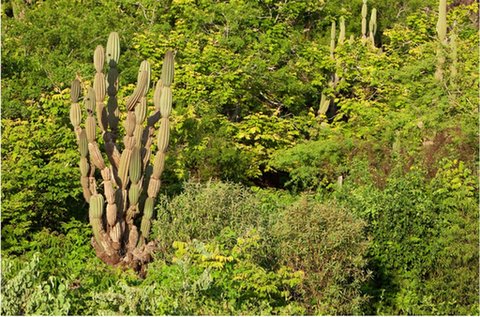CurrentsAreKing
Theislandsareteemingwithlifeinpartbecauseofwheretheyformed.TheGalápagosIslandssitattheintersectionofseveralmajoroceancurrents—somewarm,some cold.
Theclimatedependsonthesecurrents.Andthecurrentsareinfluencedbythewindsthatpush them.
Let’sstartwiththeHumboldtcurrent.ItsweepsnorthfromAntarcticaupthewesternedgeofSouthAmericaandcarriescold,nutrient‑rich water.
TheHumboldtisadeep‑watercurrent.Withpowerfultradewinds,itcreatesaneffectcalled upwelling.Windsblowoceanwateratthesurfaceaway.Thendeep‑seawaterrisesuptoreplaceit.Upwellinghelpscreatearichmarineecosystem.Asoceanorganismsdie,theysinktothebottom.Thedeepseaisthenfilledwithnutrients.Upwellingbringsthatwatertothesurface.Thenutrientsprovidefoodfortinyorganismscalledphytoplankton,thefirstpartoftheoceanfood chain.

Cromwell current
PeruOceanic current
SouthEquatorial current
Humboldt current
PACIFIC OCEAN
GALÁPAGOS
ISLANDS
ECUADOR
South
America
Panama current
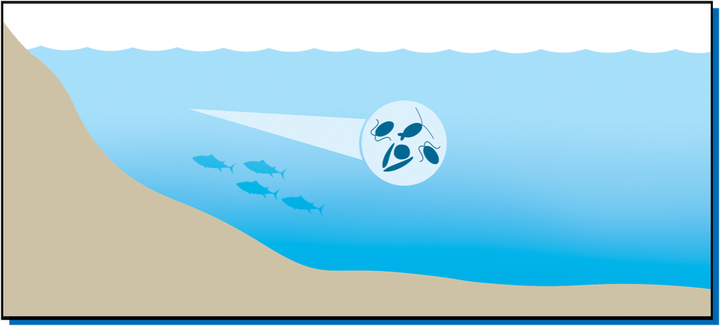
Coldwaterholdingnutrientsrisesuptoreplacewaterthatispushed away.
Surfacewindspushwaterawayfromthe land.
phytoplankton
UPWELLING
Strongwindsmixwithdeepcurrentstocreate upwelling.Theoceanbecomesplentifulwith food.
WhenCurrentsCollide
FromMaythroughDecember,theHumboldtcollideswiththewarm‑waterPanamacurrent.ThePanamacurrentflowssouthfromCentralAmerica.Whenthesetwocurrentsmeet,theycreateacoolmist.Cloudsformovertheislands.Theislandsseemto disappear.
Meanwhile,theCromwellcurrentmovesinfromthewest.IttravelsthousandsofkilometersfromHawaii.Thecurrentslamsintotheislands,upwells,andswirlsaroundthem.Thisdeep‑water,coldcurrentalsocarriesnutrientstofeedthemarinefood chain.
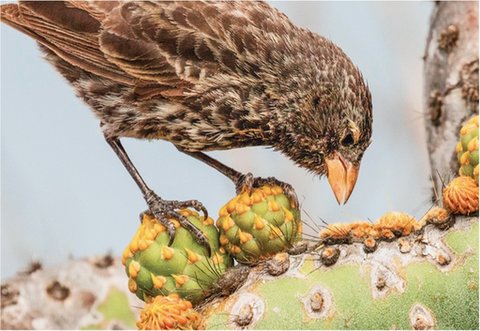
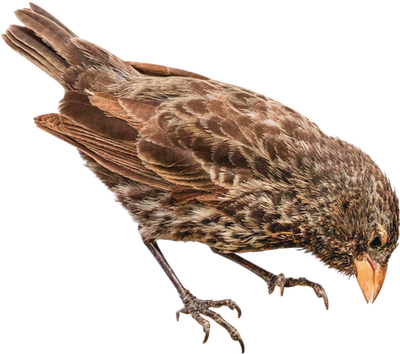
cactus finch
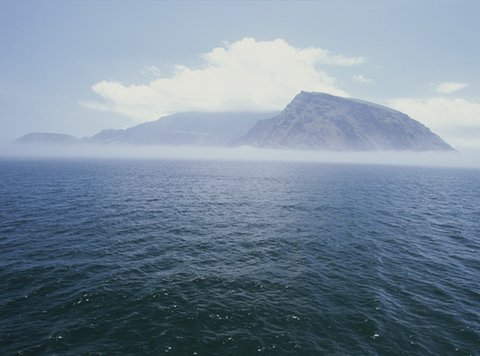
mistandfogaroundIsabela Island
GalápagospenguinsandfursealslivealongthewesternshoresofIsabelaandFernandina.Here,theupwellingisstrongest.Thewateriscoolerhere, too.
Atthesametime,theSouthEquatorialcurrentflowseasttowestthroughtheGalápagos.Thiswarm‑watercurrentisamajorsurfacecurrentinthe Pacific.
AroundDecember,thewarmPanamacurrentbecomesdominant.ItbringshighhumidityandheavytropicalrainsthatcanusherinEl Niño.
ThewatersandcurrentsmovingaroundGalápagosIslandssupport life.
DisruptiveForce
DuringaharshElNiño,theHumboldtcurrentiscutoffandupwellingcan’thappen.Thatmeansthereisn’tenoughfoodforseaanimals.Theydieingreatnumbers.Atthesametime,bigrainfallsmakedrylowlandsgreen.Landanimalsandsmallbirds thrive.
TheGalápagosareaplacewherenaturefightstostayinbalance.Itwasbornoffire.Itisfueledbywindandwater.Itisalwaysfullof life.
